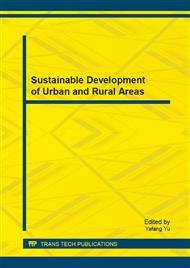p.204
p.209
p.217
p.222
p.226
p.230
p.234
p.238
p.242
Development and Evaluation for Microdamage of Concrete under Uniaxial Compressive Load
Abstract:
Development of microcracks and microstructures under uniaxial compressive load were studied by the measurement of axial residual strain and the calculation of specific crack area. Two opposite mechanisms could be distinguished for describing the development of microstructures, i.e. densification and micro-crack formation. Based on the experimental results, consistent tendency was found for the development of inside microcracks and overall deformation. Higher load level induced larger residual strain and residual specific crack area after unloading. Significant difference in the development of cracks was found for concrete specimens of different proportions. Specimen with higher water to binder ratio and lower strength developed earlier corresponds to lower initial stress-strength ratio for the beginning of crack propagation, and lower critical stress level for the beginning of unstable development. Effect of uniaxial compressive load on the durability of concrete specimen depends on the relative relationship between the two mechanisms.
Info:
Periodical:
Pages:
226-229
Citation:
Online since:
January 2014
Authors:
Price:
Сopyright:
© 2014 Trans Tech Publications Ltd. All Rights Reserved
Share:
Citation:


